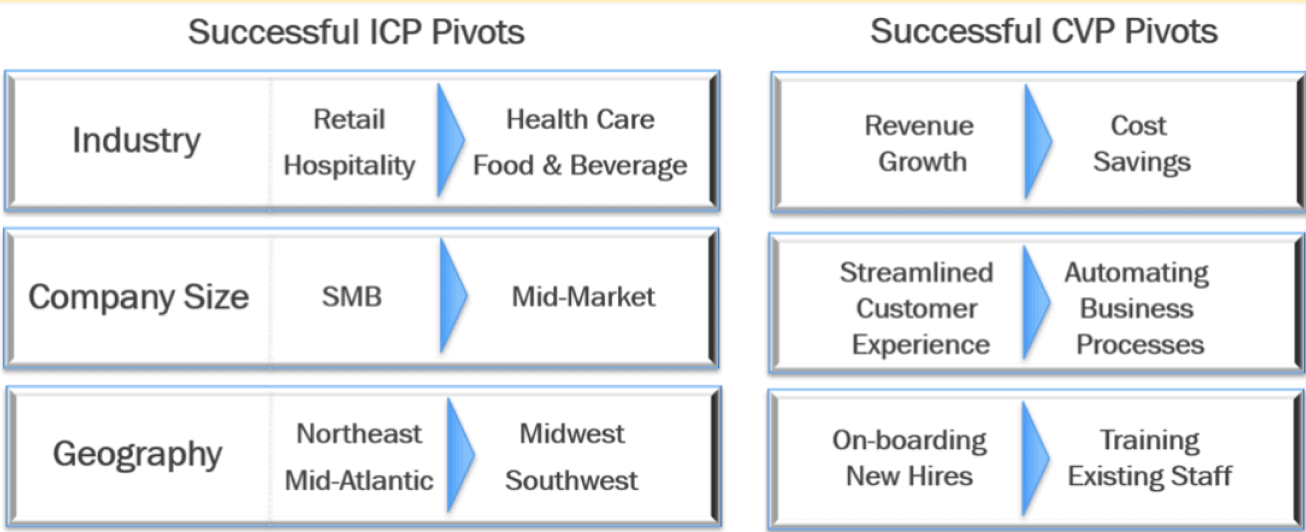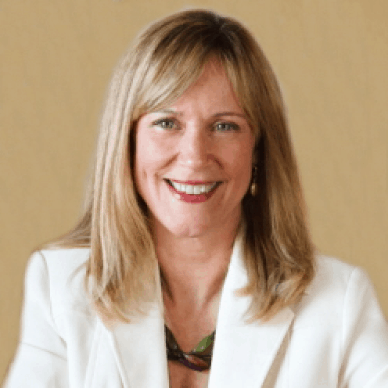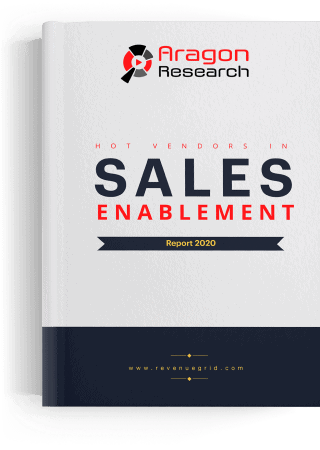W’re living in a world unlike anything many of us have experienced before. The current sales landscape is facing a once-in-a-generation disruption.
The COVID-19 pandemic has pushed companies to evolve and pivot faster than anything in recent history.
The sales model has changed as reps can no longer speak face-to-face with their prospects. In-person demonstrations are a thing of the past, and it’s unlikely that large industry-wide events will return any time soon. Yet, even in this confusing environment, there are opportunities.
Companies and business leaders that discover how to not only survive, but thrive in the new normal, could lead the way to a sales revolution.
So, how do you pave the way to a rapid revenue recovery in B2B sales?
We’ve spoken to some of the top sales and business leaders in the world to find out.
How can sales leaders still hit and exceed their b2b sales plans in the new economy?
Imagine it is April 2021. As you look back on today, what will be your biggest business regret?
When asked about regrets in the 2001 and 2008 recessions, the response from sales leaders and founders is eerily consistent: Not driving a bolder, faster pivot. There is no universally correct go-to-market strategy. Instead, optimal go-to-market design depends on the outer context in which it resides.
When the outer context shifts, rapid adaptation is necessary, starting with the organization’s Customer Value Proposition (CVP) and Ideal Customer Profile (ICP). This is not easy. Change is riddled with anxiety. However, past down economies abruptly re-wrote the economic landscape seemingly overnight, shifting advantage from one company to another. This is your opportunity to play offense, not defense.
In order to maximize the accuracy of your pivot hypothesis, orchestrate a cross-functional meeting to understand the outer context shift and its implications for your business. Include leaders and front-line employees in this discussion. The former provide strategic guidance. The latter represents the most accurate voice of the customer.
As you formulate your hypothesis, pretend you were just parachuted into your business as a new CEO. Given your product, staff, and business process expertise, how do you fit into the realities of the new economic landscape? This exercise will help detach you from sunk costs and now irrelevant investments that can clutter your judgement.
For inspiration, here are some successful ICP and CVP pivot examples conducted by companies in our portfolio or run by our LPs:
Sales leaders have a huge opportunity to optimize their team for remote sales. The biggest shift will be coaching teams to hit their expectations completely remotely.
Coaching is the leadership technique to up-level the team through asking questions and accountability. The 4 step REKS framework is immediately applicable, fair and a consistent way to encourage everyone on the team to improve and help each other.
Results – if it is not measured, it can’t be improved (e.g. # of deals closed, time from discovery call booked to completion)
Effort – what are the leading indicators of achieving your results, measure this too (e.g. meetings on the calendar, or demo conversion)
Knowledge – encourage them to invest in their professional development through books, videos or creating content for others to benefit from on the team
Skills – hold your team accountable to implementing their best practices on customer calls through reviewing their call (hopefully with video on) using a standardized checklist.
In the “new economy” nothing will have really changed other than the physical proximity of people.
Everything else is the same as it ever was.1) We must define our ICP better
2) We must define our GTM strategy better
3) We must teach qualifying and discovery skills.
4) We must teach managers how to be leaders and managers, not just dashboard demonsThis is the same stuff we’ve always been told to do. The difference now is that more folks need to pay attention to the details listed here.
5 Steps to Leverage LinkedIn for Sales When Returning to the Workplace:
Our economy has been hit hard, more people are unemployed today than during the Great Depression. And while I am confident we will all come through this, it will be faster for some and more difficult for others.
One thing, however, hasn’t changed, and that is the importance of your network. It is the person who understands how to leverage their connections that will bounce back the fastest.
LinkedIn is one of the most powerful tools we have available to us to do that. Keep in mind, no sale can happen without a conversation, so, that is the goal… to convert content and connections into conversations.
Here are 5 steps that you can implement right away to help you come out of this quickly:
1. Position your profile the right way. First, consider SEO (search engine optimization) Take a look at the hashtags, keywords, and phrases your ideal buyers use and, where appropriate, add them to your profile. Next, if you are in a sales position, make sure your profile shows up as not just your resume but as a resource. Highlighting the challenges your buyers face, their ideal future state, and the gap that you fill between the two.
2. Make sure you are connected to your entire IRL network. Pull out those business cards, search through your CRM, check out past emails, and connect, connect, connect. You can’t leverage what you don’t have.
3. Buyer map your ideal buyers. Take a look at LinkedIn’s filters and determine which ones will help you build a list of prospects. Identify all the decision-maker and influencer titles that you’d like to engage, as well as your ideal companies that you want to pursue.
4. Use the 2nd-degree filter alongside your now defined search to identify who in your network can help you gain access to your prospects. From here you can ask for introductions or permission to name drop, opening up doors with a higher level of credibility than any cold call could ever do!
5. Nurture your network. Stay top of mind through curating, sharing, engaging on, and creating content that your buyers’ are excited to consume. In addition, reach out to your network individually with short video messages, industry benchmark information, implementable insights, and small touches, letting them know that they are top of mind.
Several strategies and habits to incorporate come to mind to exceed your b2b sales plans in the new economy.
The recent experience of isolation will impact the reopening of offices and expectations of teamwork in a variety of ways:
1. Concern for employee well-being
Should employees be returning to an office environment, initial caution of modified distancing should be in place to relax fear. It would be wise to have the first team meeting invite all perspectives of experiences and lessons recognized for improving client relations.
2. Require A Check-in with All Clients
On the first call, remove any notion of trying to sell. Instead, ask how the individual is doing and how the company is holding up. Ask how dealing with the Covid virus affected business. This sincere concern most often triggers a more in-depth conversation. Again, avoid selling, but ask if the person would like to set an appointment for updates on your company’s status.
3. Collaborate per Trends in High-Tech
Create a team environment where every member willingly learns something new about high-tech to discuss in meetings. Each is to prepare insights on how the new technology will apply to and affect business. Discussions of both the findings and the takeaways will help everyone to exceed their B2B sales plans in the new economy.
Tactic #1
Orient yourself around the problem and the person. Understand how deep their problem is and address their needs. This may not have anything to do with the product you have or are building. This is where you have to be creative and think differently. Having an open mindset is critical to thinking about this from a different vantage point.
Tactic #2
Narrow your focus to a small subset of people with that problem who you think you can help, right now. Regardless of what stage your product is in – because it might not be about your current product.
Be honest about where your product is right now and look instead to solve the customer’s problem. Where can you leverage your knowledge and experience and offer a service or consulting? “Find the pebble that is in their shoe right now and then solve for it.”
Tactic #3
Build a profile of a customer that meets the needs. What job would they hire you to do? Is there a job description that the product/service performs? What gains will they get for it? What metrics would be used to measure the change needed?
Again, focus on the problem, not the product. Be buoyant, open and creative. Be ready for all and every possibility. It might very well be core or adjacent to the problem you think you and your team can solve really well today.
Tactic #4
In 25 words or less construct a value hypothesis around the problem and the person. What is the use case? Why would someone hire you? Don’t be afraid to pivot. Look instead at the pressing problem they have today that you could help them with. How would you define a proof of concept? Staying on the field long enough is the goal right now!
Tactic #5
Monetize. How would you charge to solve their problem today? What is the fastest and easiest way to do business together? Go through it with your customer – get on the phone or video and have an open discussion. “Here is how I am helping others like you.” Charge the way people are used to paying and is easy for them, which might mean labor and consulting fees. Don’t make it complicated. You are not looking for your “Mister Right” instead you want to find your “Mister Right Now”.
Then construct a campaign that is customer and problem focused. The community at large is craving for content right now so where can you position yourself as a thought leader focused in your domain?
Tactic #6
Campaign execution – Conduct a focused, over-the-phone, or video campaign to reach out to the people in the bottom of your funnel who care. Sean suggests using the SPIN framework as a guide. Here is one resource on this framework.
S stands for Situation and these questions are used to help you get a better understanding of what’s going on in your buyer’s world.
P stands for Problem questions and these should be used to have your customer divulge their pains to you. You should aim to learn what’s causing them trouble and push them to look for a solution.
Now what comes next is I, which stands for Implication questions and these should be used to highlight a cause and effect relationship based on your understanding of the buyer’s current situation.
N stands for Need-payoff questions. What this means is that you should be using these questions to highlight what the customer stands to gain by choosing to move forward with your product or service.
When speaking with your customers, you can say, “I think I can help you in this specific way and I want to understand if it’s true.” Ask situational questions. Find out what their need is and figure out how you can help. The goal is to understand, not sell.
In moments like these, it’s not the strong that survive, but the ones who are most resourceful.

Mike Kunkle
Vice President,
VP, Sales Enablement Services – SPARXiQ
The economic impact of the pandemic lock-down is widespread, but the individual impact per company is a sliding scale or bell curve. Some are crushed; others are “doing okay;” some are thriving. (The same applies to your prospective and current customers). You need to adjust your plans accordingly and execute with discipline and focus. Here are some things to consider, as you do:
Roles:
Reassess your sales org structure and answer the question, “What are the roles required for the new normal (or the path toward it), and what traits and competencies are required for salespeople to thrive and produce results in those roles?” Based on the role definitions and the current situation, you may need to prioritize:
- Relationship-building skills
- The ability to sell value
- The level of empathy required
- For more on those three, see this and this
- Consultative skills
- The ability to work and sell remotely
- Adaptability
- The grit and resilience they’ll need in this situation
Talent:
Per Jim Collins in his book, Good to Great, “Get the right people on the bus, the wrong people off the bus, and the right people in the right seats.”GTM/Account Plans:
Assess your TAM, ICP, and key accounts to readjust your new business development and strategic account management plans. Adjust and establish GTM plans and key account plans accordingly.Forecast:
Hopefully, all of the above syncs with your current forecast and you can see goals, objectives, and quotas aligning with market conditions. Based on the above-mentioned sliding scale/bell curve, you may need to adjust expectations (down or up). This is the time to do it.Sales Effectiveness Practices:
Reevaluate your systems, processes, methodologies, sales tools/technologies, incentives, and sales management systems, to create an environment and culture that foster high-performance and support the talent you’ve put in place (and are developing). Prioritize organization initiatives and move quickly. Get personalized learning and development plans in place for everyone, supported by coaching, to guide them toward sales mastery in the new normal. Get front line sales managers into a regular cadence of leadership, management, and coaching activities.
Pivot your go-to-market strategy, and pivot quickly.
I might be a typical buying persona for one of your sales people. I’m working from home for the first time in my 20+ year career. My wife also works full-time. We have two kids, 4 years old and 2 years old. We’re home schooling. We are slammed.
Your sales person will fail if she tries to engage me with traditional approaches (i.e. cold calls, cold emails). I’ll also likely think negatively about your company’s brand for trying. It’s not a compassionate approach in the current market.
Want your sales person to engage me in a conversation? He or she will need to be introduced via someone I trust. If that’s not an option, your sales person is going to need to send me a video message that is short (less than 30 seconds), relevant, valuable and human!
Teaching your revenue generating teams to leverage social media and digital tools was important prior to the pandemic. It’s now business critical.
My thoughts are rather boring and simple. More importantly, they are backed by data that’s showing everything being off about 15% for sales reps who still do the needed level of activities.
For those reps who have stopped…well, the results are much worse. The lesson: keep going! More activity is needed now to hit your number. If you aren’t emailing, and dialing, and leveraging LinkedIn, your odds are tough to hit your number.
Finally, utilize www.truepeoplesearch.com as a source of cell phone numbers. This is a must-have in order to interact with your buyers who are all working from home.
The advice I’ll give is not much different from the advice I gave before the pandemic. That’s because there are golden rules to follow when it comes to deploying the right sales technology and they don’t change.
You want to get the most from the solutions you currently use, and you’re assigning resources on things that will have the greatest impact on hitting the number.The first thing you want to do is understand your current use of technology.
- What software does your organization currently have subscriptions to?
- Who are those licenses assigned to (salespeople, sales ops, sales leaders, etc)
- What is the rate of adoption of those solutions?
- What impact are the solutions having on your business? How do you know? How are you measuring the impact?
- Are there opportunities for consolidation? Can you expand the use of one solution to eliminate the need for another solution.
The second thing you can do to ensure you hit your numbers is to make sure you’re set up to solve the right challenges with technology. Many companies subscribe to the philosophy of “CRM and Done” meaning CRM should be all sellers need.
But CRM doesn’t help reps find the best content to use for an opportunity. CRM doesn’t help you create effective proposals or presentations. CRM doesn’t help you coach your team, or help your team learn from each other. To find solutions that address revenue-impacting challenges, ask yourself the following questions:
- Are we calling on the best prospects (those that have the highest propensity to purchase?)
- Do sellers have a system to get in touch with the best prospects through best-practice email and voicemail sequences?
- Are we able to quantify and communicate value effectively to each of the buyer types we sell to?
- What are the activities or circumstances that prevent us from selling more?
To help find technologies that address revenue challenges, you can view our newly released, Top Sales Tools of 2020 guide or view free resources on the Smart Selling Tools site.
Sales leaders may still be able to hit or exceed their sales plan if they have their senior team and the entire company behind them. In order for sales to succeed, company leadership, starting with the CEO, have to pivot the strategy, get everyone on board, re-focus and insure the entire customer facing team has what they need to retain existing customers and acquire new ones.
The entire company has to be re-charged with the new strategy and be focused on customer success. This is all dependent on the CEO and company leadership.
The sales leaders and their teams will not succeed on their own, they will need the entire company to get behind the new strategy if they want to hit or exceed their sales number.
Sales Leaders can achieve and/or exceed their B2B Sales goals by following one simple rule: “Know thy Buyer.”
This means we have to be able to answer these questions:
1. Where are our buyers hanging out virtually (social, video, email, virtual events, etc.)?
2. What medium would they like for us to engage with them (Phone, email, social, text, video, etc.)?
3. What pain are we going to solve for them?
4. How painful is that problem; in other words, what happens if they do nothing?
5. Is there a different use case for my solution that now applies “post-2020 pandemic”?
Answering these 5 questions will help us be better prospectors but also help us better forecast real deals vs. tire kickers.












